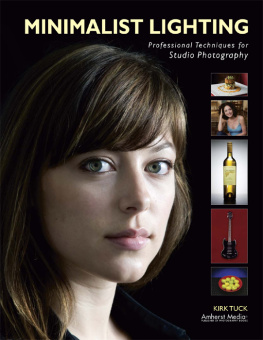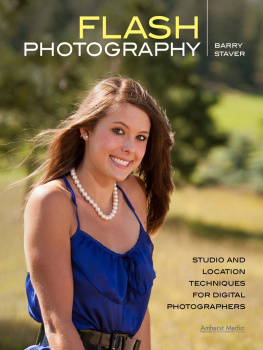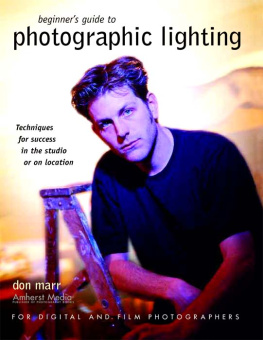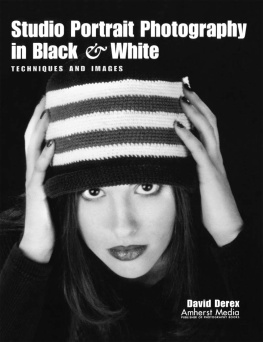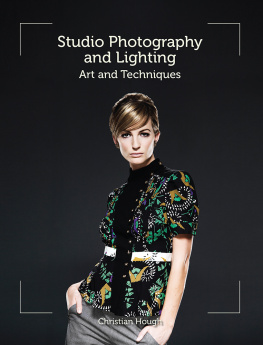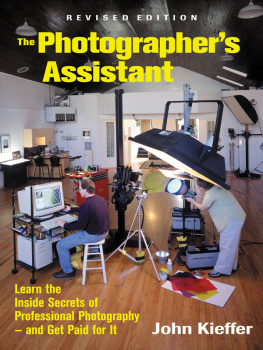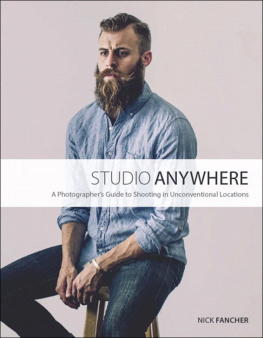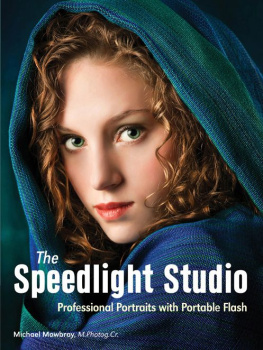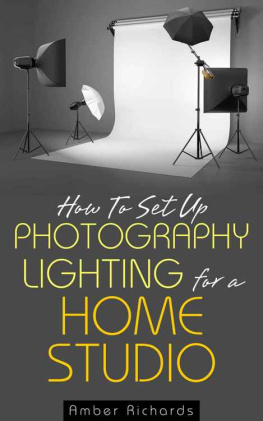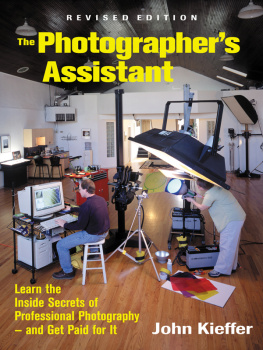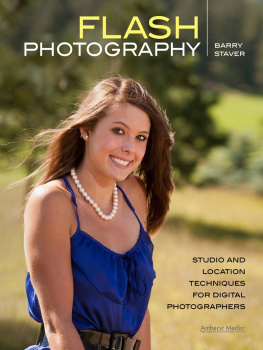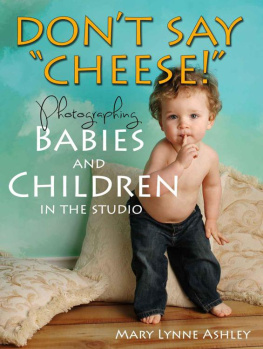About the Author
K irk Tuck attended the University of Texas where he dabbled in electrical engineering and English literature before accepting a position as a specialist lecturer teaching photography in the University of Texas College of Fine Arts. Soon, he was lured into the world of advertising and served for seven years as the creative director for Avanti Advertising and Design, where he won awards for radio, television, and print campaigns. In the late 1980s, he decided to become a freelance photographer, a career he has enjoyed ever since. Kirks clients include IBM, Tivoli Systems, Dell Computer, Motorola, AMD, Freescale Semiconductor, Elle magazine, Private Clubs magazine, Time Warner, Pharmaco, PPD, JSR, The Arts Council of Texas, Southwest Water Company, Adventure Tours, and many advertising agencies. He resides in Austin, TX.

Photo of the author taken at the Austin Lyric Opera in Austin, TX.
Dedication
I would like to dedicate this book to the photographers who whetted my appetite to learn more about lighting and about the why of photography, not just the how to. First and foremost is Richard Avedon, perhaps the greatest photographer of the twentieth century. Then, I must credit Irving Penn, Guy Bourdin, Chris Von Wagenheim, Arthur Elgort, and, of course, Chris Callis. Everything we see today was essentially pioneered by these photographers decades ago-all with much more recalcitrant tools and without the ready reference of the web. We stand (shakily) on the shoulders of giants.
Acknowledgments
I must thank my dear and patient friend Anne Butler for her keen guidance and her indulgence in sitting for my many photographic experiments. Thanks also go to Paul Bardagjy, a brilliant architectural photographer whose business insight and technical virtuosity keep the business interesting for me, and to Amy Smith for her able assistance and keen eye. Special thanks go to the swimmers and coaches of Weiss and Weiss Aquatics at the Rollingwood Pool, with whom I swim. They dont necessarily care what you do outside the pool, but in the pool you are always family. Finally, I must thank my wife Belinda and my son Benjamin for their endless support and patience. They are both correct: tagging along on a corporate shoot is not a family vacation.
Preface
T his is, first and foremost, a book about lighting. I firmly believe that if you know the basic principles of lighting you can light just about anything you can fit in your studio with almost any light source-from a flashlight, to a 60W light bulb, to the usual studio electronic flash lighting. In the course of this book, youll see examples created using battery-operated, hot-shoe mounted flashes; tungsten fixtures (those designed for photography and those you can buy at the well stocked hardware store); fluorescent light fixtures; inexpensive Alien Bees electronic flashes; and the more professional Profoto studio flash equipment.
In no way do I advise you to use a light or accessory just because I happened to buy a particular product on a whim. In nearly every case, an expensive item used to create a look could easily be replaced by a more budget-conscious item with no impact on the quality of the image. If I use a Profoto light in a setup, it may be that Ive misplaced the Alien Bees light or Nikon flash I was intending to use and expediency suggested going with the nearest option. Some of the gear I use was also purchased over a decade ago, before less expensive options became available.
The underlying idea is that you can be proficient with just about any light source once you understand how light works. In photography, invention and creativity trump sheer spending ability in almost every contest. I come from the school of thought that photographers work hard and long to create their own individual look or style-even while using the same mainstream cameras and lighting equipment everyone else does.
I learned a lot when I wrote my first book about photography. I learned that some people want an infinite amount of detail and painstaking, step-by-step how to information. Others just want to see examples with lighting diagrams. I think that knowing the reason why things are lit or photographed in a certain way may be even more enlightening to the majority of readers. Therefore, in this book Ill show you how I use the equipment I do and try to explain why I light my subjects the way I do. That means I wont show you hard-lit photos, using multiple fill flashes at sunset, or a model with her hair on fire. If thats the kind of work you want to do, though, the lighting theory in this book will still point you in the right direction. Im not interested in duplicating the range and diversity of all the images you might find on a photo-sharing web site. Every example in this book comes from an actual assignment, was shot to illustrate an idea in this book, or was created on a self-assigned project that I truly enjoyed shooting. I hope youll like the information and the stories.Kirk Tuck
Introduction
I f you know a group of photographers, you probably realize that some of them never want to step foot in a studio. These are the guys who spend hours camping on the side of a mountain in the bitter cold, waiting for the sun to peek over some far horizon and kiss the face of a picturesque cliff with a beam or two of juicy, golden sunlight. These are the same guys who have lost a toe or two to frostbite while waiting for a rare fox to creep out of a winter lair in search of food-the hardy ones who own multiple thermos bottles and lots of scratchy long underwear.

